Ric Gindap, one-half of the new independent print and art gallery Spruce, is meticulous. Every stack of magazines should be laid out in a straight grid. Matte and embossed covers should not be displayed without a protective film lest they risk being scratched and rendered unsellable. He welcomed us to the new space in Ortigas in a black turtleneck and a flat cap, what constitutes a uniform—one he suggests (half in jest, I suppose) his interim staff wears, too, paired with a leather skirt and thigh-high boots.
Interim because they are foremost his employees at his branding and creative agency Design for Tomorrow, where his business partner Bonnapart Galeng used to work prior to pursuing passion projects, one of them Spruce.
Spruce, the duo professes, is the first of its kind in Manila: a store dedicated to stocking independent, obscure, and glossy publications from all parts of the world, over a hundred as of writing. Some of these titles were previously only available to well-traveled readers, who pay extra for excess baggage of heavy tomes, or those who can shell out money for international shipping and even more absurd amounts to get them past customs.
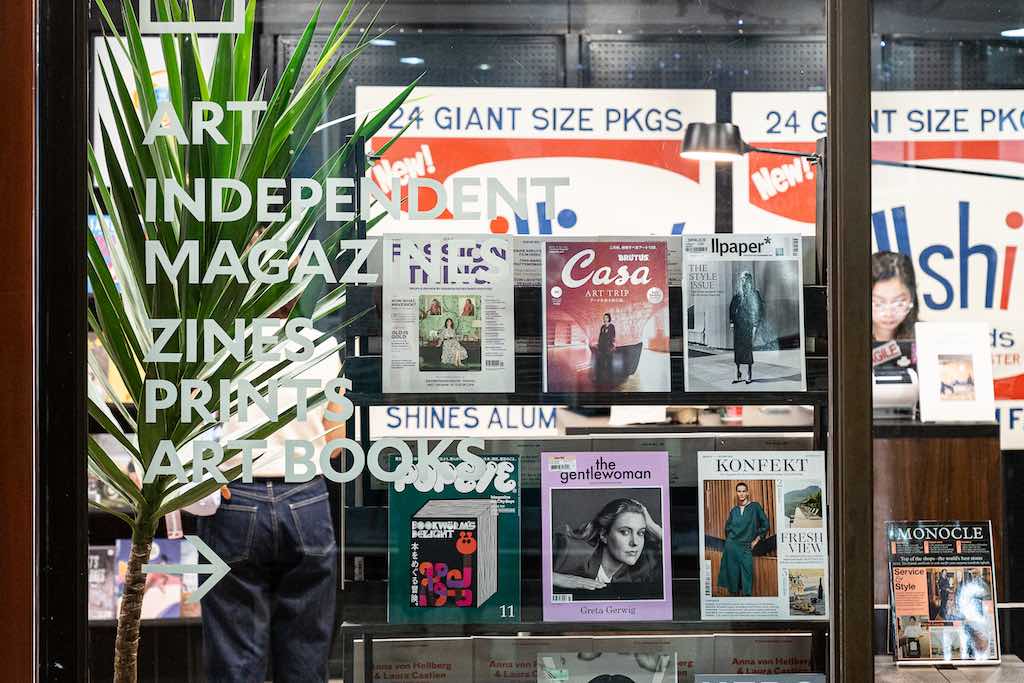
The years-in-the-making project comes at the heels of years if not decades of decline in publishing, not just in Manila but around the world. Few people see printed matter as profitable today. Mainstream publishers have since ceased putting out physical issues following a dip in demand and in advertisements that fund printing to supplement the subscriber base.
Big bookstore chains have given up on this niche market that once pulled curious readers to their spaces. What used to be shelves brimming with thick glossies are no more. You’d be lucky, Gindap observed, if there are back issues. Still sold at full price even though they are not only seasons but years behind. Even a famous secondhand bookstore that sold back issues to scrappy millennials and Gen Xers at a bargain eventually caught up with the demise of printed material. This absence is oblivious to the fact that generations of creatives—Spruce founders among them—looked to those shelves for inspiration outside mainstream media pre-internet.
“When I was starting my career in 1995, I could not afford anything. I came from very, very humble beginnings. I’ll just go to a big bookstore chain and lovingly browse and read,” Gindap recalled. “I could not afford the current issues, even the back issues, [but I loved the] thrill of discovering these obscure European titles. That was our happy place and that is gone now.”
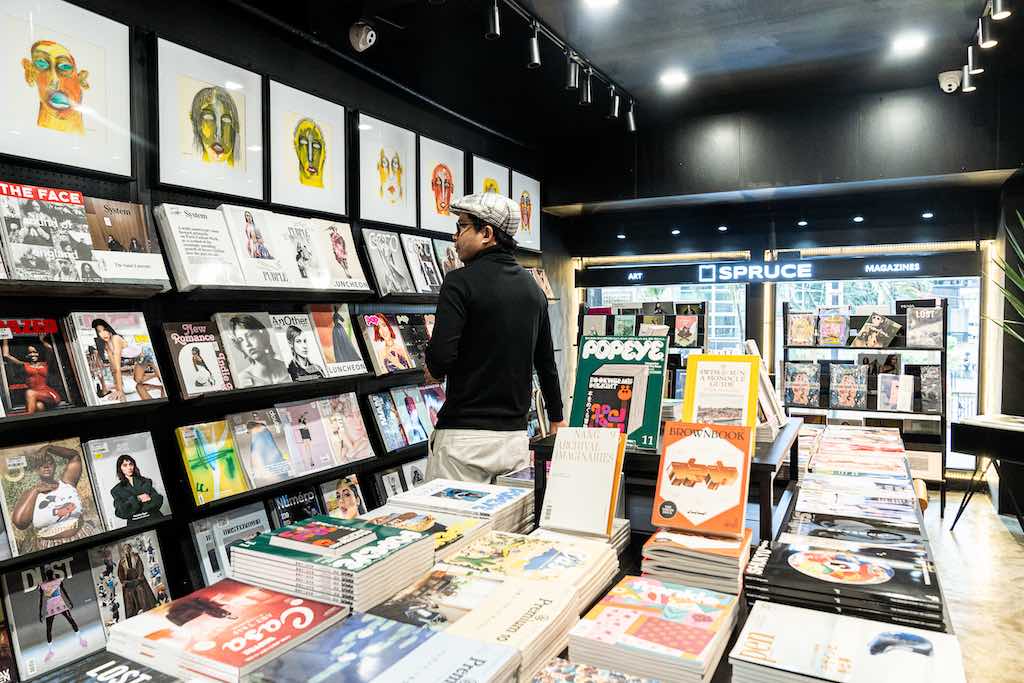
Today, you will find a few remaining international titles—both independent or those that succumbed to a reformat as a compromise to dwindling resources—at luxury retailers, a definitive proof that reading print has become, ironically, a true luxury. Jacking up prices has been legitimized as a result of this monopoly, said Gindap. A single issue can retail for thousands of pesos, an approximation of the “price” of bringing niche fashion, art, and alternative interest titles from Europe to Manila, from shipping to taxes. Prices are further inflated to offset possible losses in case these don’t sell because people interested in print—Gindap will be the first one to admit this—is a very, very small demographic. “There are probably 100 people in Manila, like us, who passionately love magazines.” Fewer are those who can afford it in its current pricing model.
That was our happy place and that is gone now. We have nowhere to buy so we decided to create this place.
Ric Gindap
The same economic hurdle, the duo speculated, is also one of the reasons why nothing like Spruce existed in Manila before. We lag behind our neighbors in the Asia Pacific region like Japan (Tsutaya Books in Tokyo), Singapore (Basheer Graphics), and Thailand (Open House in Bangkok), where independent and small-scale magazine shops thrive. There are, however, a few exceptions like independent press and bookstore Everything’s Fine in Makati and a couple of underground micro presses and book fairs that champion pro-author and direct-to-consumer business approaches.

Spruce is determined to pinch margins where they can despite this challenge. They feel that they owe it to their younger selves, to print’s small but loyal community, and to newer generations to make print more accessible, making more people fall in love with physical pages again or for the first time. “We have nowhere to buy so we decided to create this place.”
This also goes for independently produced local publications and zines. Spruce currently has on its shelves titles like Novice, an annual magazine founded by creatives from Nueva Vizcaya. “We don’t usually mark up na or get anything from them,” said Galeng. “Basically, we would just want them to be here. All of the proceeds and the sales will be theirs. ‘Di na kami kukuha ng consignment fee because making a zine, for example, gagastos sila ng, let’s say, P1,500 for it and they will sell for P2,000 or less, tapos kukuhanin pa namin from them? Tapos ilang copies lang ipiprint nila. So parang, what’s the point?”
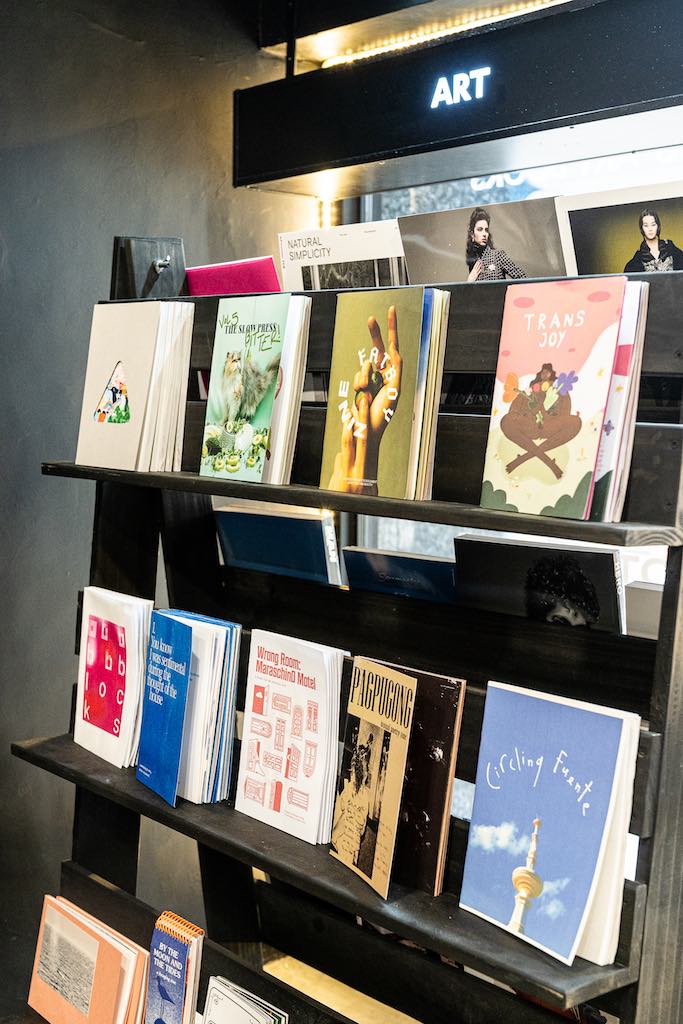
How do they manage to do it then? “We really talk to the publishers and the editors of the magazine directly,” Galeng said. It certainly helps that they’ve maintained relationships with these publishers and editors back from their days as avid readers.
“Kapag bibilhin mo kasi siya [through third-party distributors] it’s very expensive. That’s why pinag-isipan talaga namin how do we make it—well, not really cheap—but accessible.”
To supplement slim margins from print sales, they consign art by contemporary local artists—the reason why it’s called Spruce Gallery. They currently have on display paintings by Ronald Caringal and Angelo Magno. Their plan is to exhibit different artworks six times a year. “We may not be making money from magazines per se, but probably art can help us,” Gindap said.
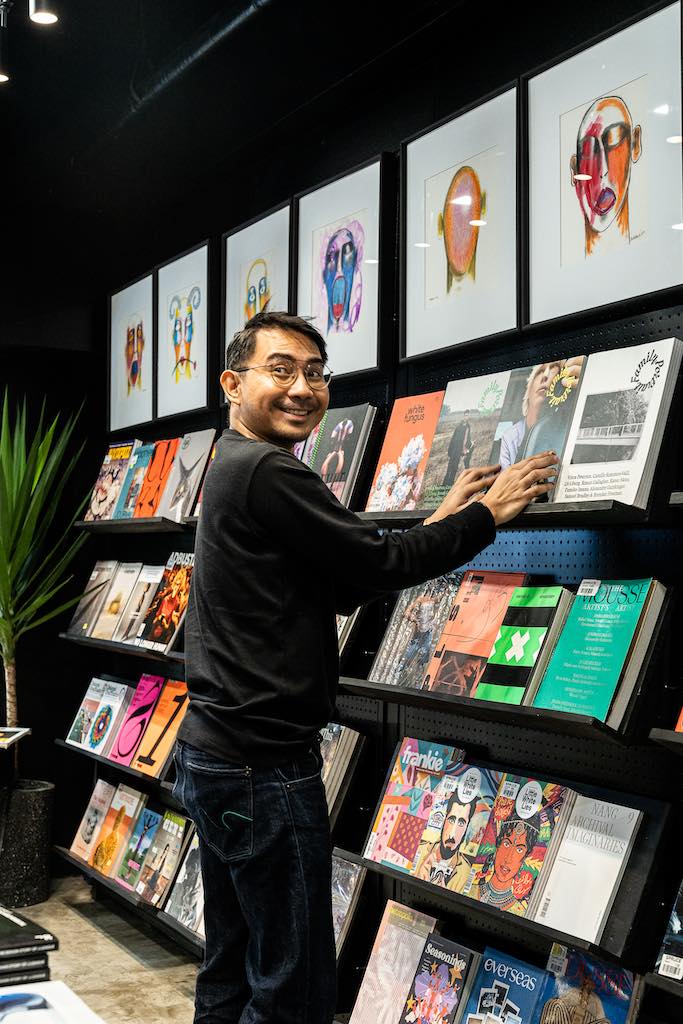
Spruce, in all of its 41-square meter glory, is also a multi-use space. Galeng shared plans to host events like talks and book launches, not unlike their magazine mecca in London, magCulture, which hosts similar events.
A few days into its soft opening, already, the print-loving community has not failed them. Enamored by the existence of a newfound haven, what they call “maghags” and “culture vultures” (a term of endearment, I hope) come in troves with cash in hand as Spruce currently transacts in cash, bank transfers, or digital wallets only. Because the prices at Spruce are as close to the prices the publishers set with minimal markup minus extortionate shipping and import fees, many fans are willing to spend upwards of thousands of pesos on transactions. One individual reportedly doled out P22,000 for a stack of magazines, all paid in cold hard cash.
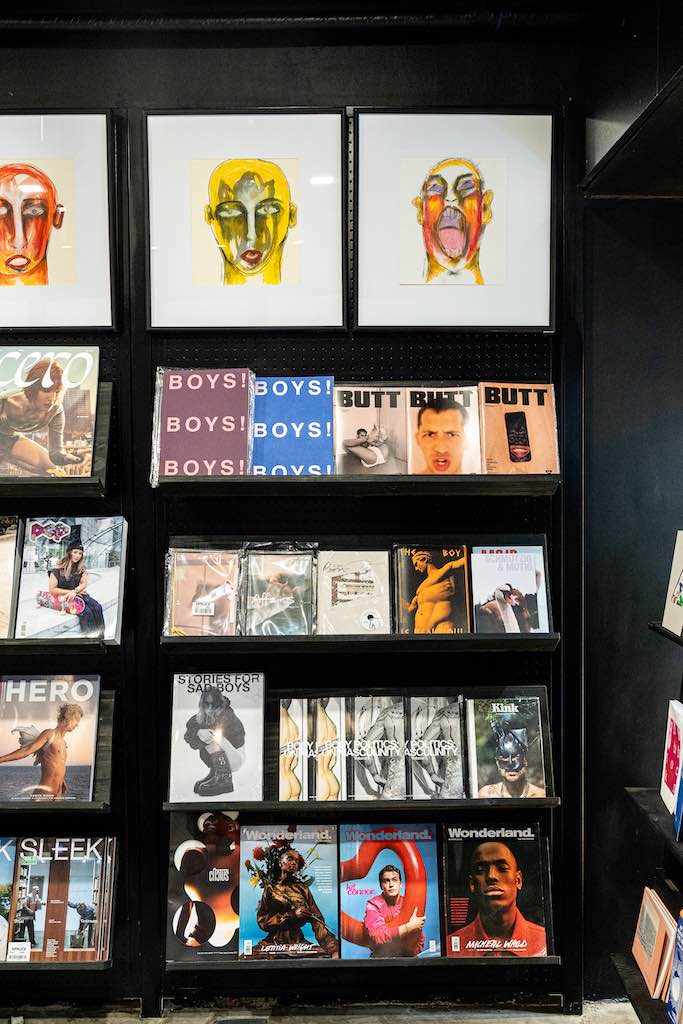
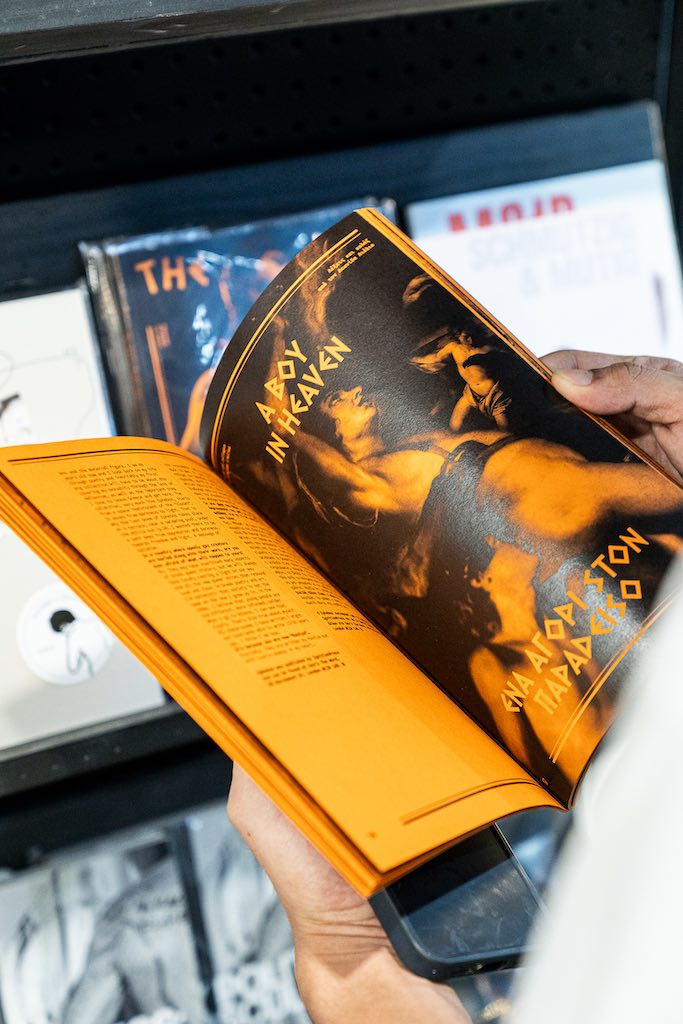
Some titles already sold out, including rare ones that Spruce only stocked less than 10 copies of each owing to limited inventory or intervention by their editors and publishers. These include obscure titles like Inque, an annual publication that runs zero ads and will only exist for ten years, and media’s latest frontier to save its business: K-Pop covers like Pop Magazine’s September 2023 issue featuring BTS’s V.
Spruce was only allotted three copies by Pop’s publisher, all of which immediately sold out as soon as they were posted on Instagram.
“Ideally, reservations are not allowed especially for high-demand items,” Gindap admitted. “But some of the fans are very nice and very persuasive.”
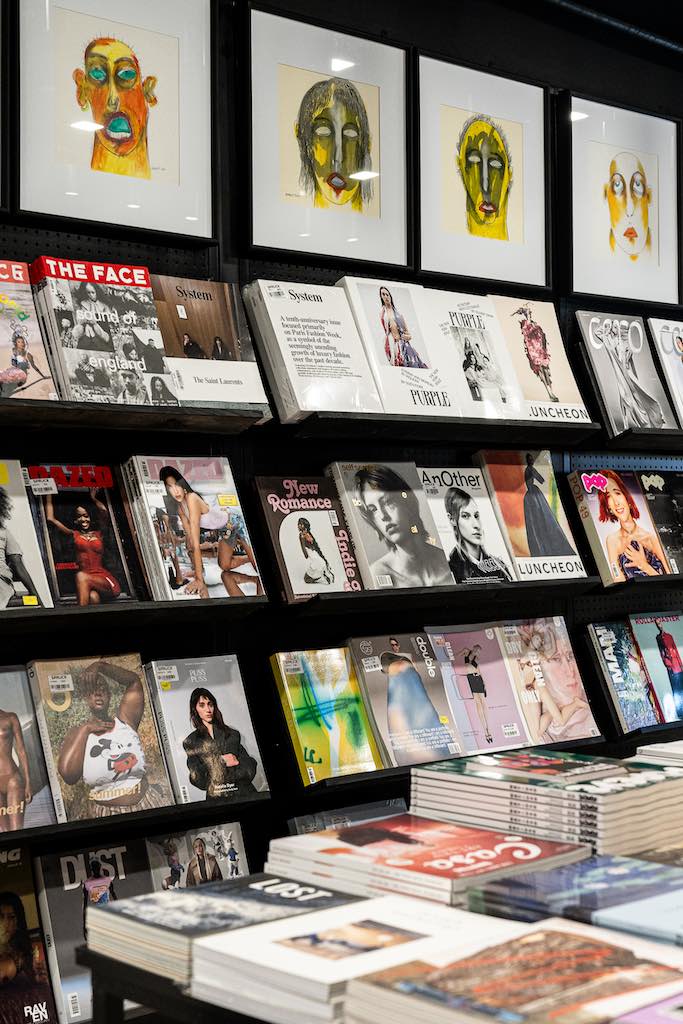
As of this writing, Galeng said they have no plans of putting up an online store because they want people to go to the physical store that they worked so hard on to reward those who will trek to Ortigas with a unique in-person experience. “We decided to be experiential because sometimes, online is so impersonal,” his business partner added.
Gindap even offers an impromptu photo session as a complimentary service to in-store shoppers along with personalized magazine recommendations.
While many sought-after titles like the literary magazine Paris Review and bi-annual culture publication Acne Paper sold out immediately, the duo assures those who haven’t gone to the shop yet that there is more stuff coming, including art and design books.
“We had to hit the ground running even though we were plagued by so many delays because of government bureaucracies. This is just half of our target titles.” The goal, they said, is to stock 350 titles. And if you want something added to this roster, suggestions and preorders are very much encouraged, said Galeng. “At least alam namin what titles they want that we don’t have. I mean, ‘di naman namin alam lahat ng titles.”
“My limits din our knowledge,” Gindap conceded before quickly adding, “although we know every title that we have in this space.”




